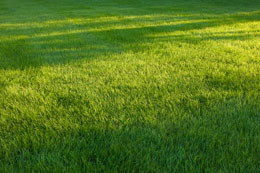Maintaining a healthy green lawn throughout the year requires proper maintenance and occasional sowing of grass seeds. For reseeding a lawn, there are certain tips, like correct grass sowing time, removing dead spots, soil preparation, and sowing grass seeds.

Lawns beautify the environment and add a cooling effect to every landscape design. Nevertheless, they are susceptible to harsh climatic conditions, diseases and pest, which in turn result in brown and/or bare spots. If you notice thinning of the lawn grass or brown spots in them, then it is high time that you reseed it. In fact, reseeding or sowing of grass seeds is the best tip to fill up the patches and maintain a uniformly lustrous green lawn.
Reseeding should be done with proper planning and prior soil preparation. First of all, analyze and determine the lawn problems. If there are a few small-sized dead spots, then you can consider reseeding those sections only. Whereas, in case of many large bare patches, it should be done for the entire lawn. Thus, based on the purpose of reseeding, you can prepare the soil and sow the grass seeds.
Reseeding is an easy gardening project, which you can do on your own by following the basic seeding tips. However, it is not advisable to do so in summer, as germination of grass seeds is difficult in the scorching summer heat. Spring season is an ideal option, as the temperature is neither very hot nor very cold. The main logic is to protect the newly established grass from scorching heat and heavy frost. Let's take a look at DIY tips on how to reseed a lawn.
Time Period
One of the most common queries amongst hobbyists is when to reseed the lawn. Though it can be done at any time of the year, it is best to sow seeds in the fall season. By doing so in fall, there will be maximum germination of the grass along with rejuvenation of the existing lawn. Other than fall months, you can do it in spring and late summer. In all the options, the germinating grasses are neither exposed to frost nor to harsh sunlight rays.
Removing Dead Spots
If you are reseeding patches, you can remove the dead spots manually by using a shovel. You can dig the soil to about 2 - 4 inches deep in order to get rid of the grass roots. Nevertheless, removing large dead spots is quite a labor intensive step in case you are reseeding the entire lawn. In such cases, you can skip this step and directly go for preparation of the soil.
Preparation of Soil
Prior to reseeding, the area and/or soil for seeding should be prepared properly. Preparation also includes removal of the debris, dead grass, weeds, and other invading grasses. For weed control, you can use an appropriate weed killer by following the directions carefully. Following this, aerate and dethatch the lawn with suitable equipment. Also, check the soil nutrients and if necessary, supplement the soil with fertilizers and composts.
Reseeding
After preparation of the area, you can sow the grass seeds. Based on the purpose for reseeding, you can select the correct grass variety. For instance, you should purchase the same grass species for seeding patches. If you are renovating the entire lawn, then you can choose another grass variety that suits the climatic conditions and soil type in your area. For seeding smaller sections, you can sow manually, whereas for seeding the entire lawn, you can rent a mechanical spreader to scatter the seeds evenly.
Caring for New Lawn
This is probably the most crucial step for reseeding a lawn. Immediately after reseeding it, water it lightly. Covering it with a polythene sheet is a good idea to ensure fast germination. By doing so, evaporation of soil moisture is reduced, thus retaining the adequate soil moisture level required for germination. Do not forget to remove the polythene sheet when the first grass seedlings appear. In the first few weeks after germination, water the lawn for at least twice a day.
Speaking about the cost, it depends upon how you carry out the project. If you hire professionals, obviously the total cost for this process will be high. In order to ensure optimal grass growth, do not walk over the lawn during the first few weeks after seeding it. With careful instructions for reseeding, you can expect a uniform lustrous green lawn in the coming season.






 Lawns beautify the environment and add a cooling effect to every landscape design. Nevertheless, they are susceptible to harsh climatic conditions, diseases and pest, which in turn result in brown and/or bare spots. If you notice thinning of the lawn grass or brown spots in them, then it is high time that you reseed it. In fact, reseeding or sowing of grass seeds is the best tip to fill up the patches and maintain a uniformly lustrous green lawn.
Lawns beautify the environment and add a cooling effect to every landscape design. Nevertheless, they are susceptible to harsh climatic conditions, diseases and pest, which in turn result in brown and/or bare spots. If you notice thinning of the lawn grass or brown spots in them, then it is high time that you reseed it. In fact, reseeding or sowing of grass seeds is the best tip to fill up the patches and maintain a uniformly lustrous green lawn.